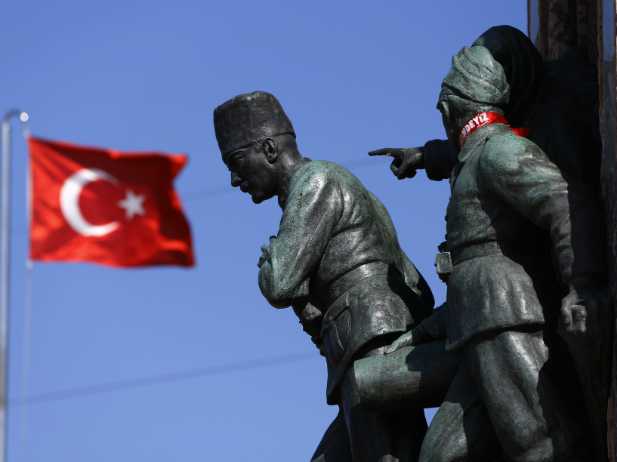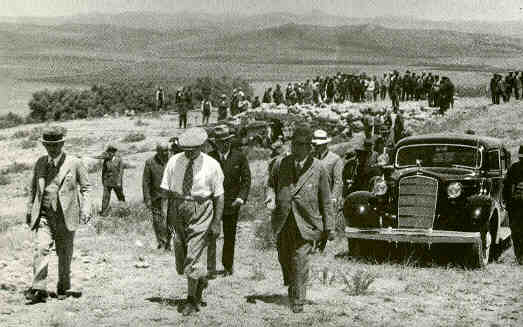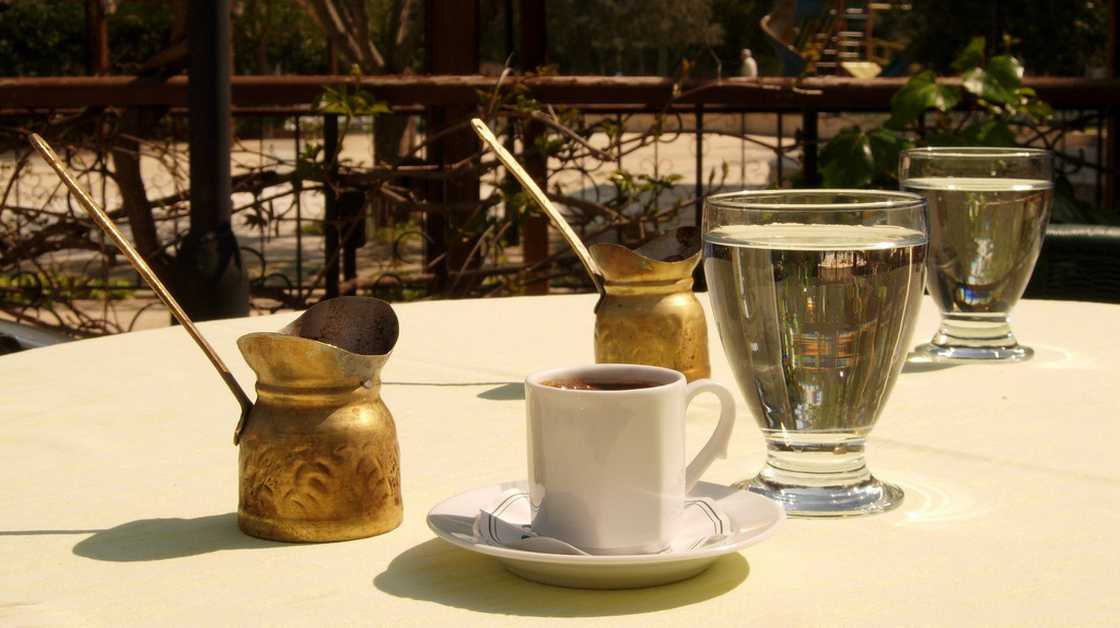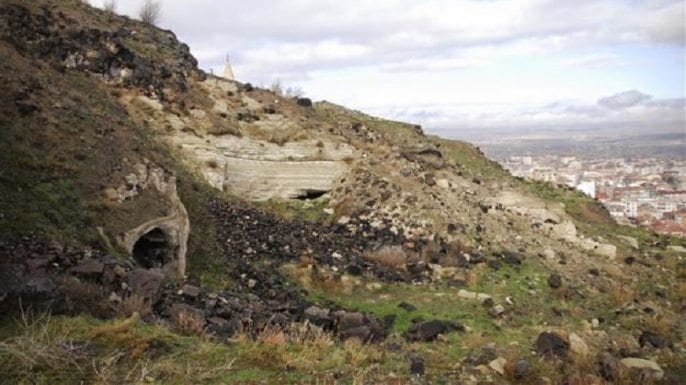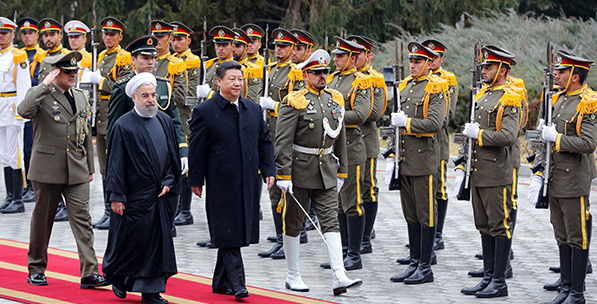
As the regional rivalry between Saudi Arabia and Iran reached ever new heights with a potential escalation following Riyadh’s execution of prominent Shiite cleric Nimr al-Nimr, the entrance of a new major actor to the troubled waters of Middle Eastern politics was taking place. So far, President of China Xi Jinping and Premier Li Keqiang have visited almost every region in the world in the context of their multidimensional foreign policy approach, but not the conflict-ridden Middle East. Therefore, when Xi embarked on a major diplomatic tour into the region comprising Saudi Arabia, Iran and Egypt there were plenty of remarks in global media outlets concerning the critical decision of the "Middle Kingdom" to finally come out from the sidelines and take a step forward to become a global player.Not least because the Middle East represents the most difficult regional geopolitical realm in which China’s non-interference into other countries’ domestic affairs policy and staunch neutrality could be maintained due to endless conflicts among regional neighbors. As a pretext to the historic visit, Xi was trying to gradually inject China into the complicated Middle Eastern political seen by inviting representatives of Syrian President Bashar Assad’s regime and the opposition in Syria to Beijing to promote a peaceful resolution. He also dispatched his deputy foreign minister to Riyadh and Tehran at the peak of the crisis to mediate between the sides and to recommend calm. More importantly, Xi made a last minute alteration in his long-planned visit itinerary and decided to visit Tehran instead of the previously planned United Arab Emirates (UAE). This significantly raised the profile of his historic tour at a time when the spotlights of global investors are all focused on Iran, striving for economic opportunities in the post-sanctions era. As one of the major global importers of energy, China’s main interest in Saudi Arabia and Iran is expectedly economic, based on the maintenance of cheap and reliable supply of oil. Currently, Saudi Arabia is China’s biggest supplier of crude oil and bilateral trade stands around $69 billion. During Xi’s visit, he and King Salman inaugurated an energy research center and opened the Yasref Oil Refinery, a major joint venture between Saudi Aramco and China’s Sinopec. They also signed a memorandum of understanding for the construction of a high-energy nuclear reactor. But China’s diplomatic hyperactivity in the Middle East cannot be confined to pure economic opportunism based on maintaining cordial relations with all economic partners. On the contrary, Beijing seems to have realized a diplomatic opportunity space created by the lack of interest in Middle Eastern politics on the part of U.S. President Barack Obama’s administration and the fully fledged engagement of Russia in the Syrian civil war, allying itself clearly with the Shiite camp. Therefore, neither Washington nor Moscow are in a position to act as an honest broker in the tension between Iran and Saudi Arabia, which presented a perfect moment for China’s entry onto the Middle Eastern stage as a global power. Therefore, Xi wanted to become the first global leader to visit Tehran following the lifting of international sanctions to which China has contributed. Commercially, Iran is the favorite trading partner and logistical hub for China in the region, a status that was confirmed with 17 new agreements of cooperation in the areas of energy, trade and industry and a comprehensive strategic partnership document. The plan is to raise bilateral trade to $600 billion in 10 years, and the key to that vision is China’s One Belt One Road initiative, which includes ambitious rail, road and port projects, including a high-speed rail network connecting Xinjiang in western China with Tehran via Almaty, Bishkek and Ashkhabad. Iran is geo-strategically important in this vision as it stands at a crossroads at the edge of Asia before the route of the ancient Silk Road reaches Turkey and Europe. Given the deeply skeptical approach of Iran’s Shiite establishment toward the U.S. and Europe despite the recent rapprochement, China’s autonomous stance in the world system provides comfort for long-term collaboration. While China has long maintained a policy of non-interference in other countries’ domestic politics, harmony and economic cooperation, this might be just about to go through a radical change as far as the Middle East is concerned. China is becoming a superpower and will act like one. [Daily Sabah, January 30, 2016] |
Officials in Turkey have announced the discovery of a massive underground city in the historic Cappadocia region of central Anatolia. The complex of carved rooms and tunnels was unearthed as civil workers began excavating for an urban renovation project in 2013, but its discovery was not made public until recently. Experts estimate the still-unnamed find may date as far back as 3,000 B.C., and they have already uncovered many artifacts and hidden rooms along with what may amount to several miles of tunnels—many of them wide enough to drive a car through.
Turkey’s Cappadocia region has long been designated a World Heritage site for its dazzling rock formations and more than 200 underground cities and villages, but according to government officials, a new discovery in Nevşehir Province could be the most extraordinary ancient find to date. The previously unknown subterranean metropolis was discovered by accident during a massive urban renewal project by the Housing Development Administration of Turkey, more commonly known as TOKI. Workers had demolished several hundred buildings and begun prepping for new construction when they stumbled upon a honeycombed network of cave entrances, tunnels and hand carved chambers in the area surrounding a Byzantine-era hilltop castle. The construction project has now been indefinitely postponed, and engineers and researchers have descended on the scene to explore the site’s labyrinthine interior.
“It is not a known underground city,” TOKI President Mehmet Ergün Turan told the Hurriyet Daily News, the English-language Turkish paper that first broke the story. “Tunnel passages of seven kilometers are being discussed. We stopped the construction we were planning to do on these areas when an underground city was discovered.”
Detailed information about the layout or condition of the city has been slow to emerge, but early estimates place the age of some sections at around 5,000 years old. Turkish officials claim they have removed several dozen artifacts from the chambers, and have reported discovering “escape galleries,” tunnels several feet wide and even what appear to have once been hidden places of worship. Nevşehir Province is already home to Derinkuyu, an 18-story underground city that was once capable of housing around 20,000 people, but if early size estimates prove correct, the new site may be even bigger. Nevşehir mayor Hasan Ünver told the Hurriyet Daily News that the complex was so vast that other underground cities in the region would be the size of a “kitchen” if placed within it.

“The underground city [was found] in the 45 hectares of the total 75 hectare area that is within the transformation project,” he said. “We started working in 2012 with the project. We have taken 44 historical objects under preservation. The underground city was discovered when we began the destruction in line with the protocol. The first galleries were spotted in 2013. We applied to the Preservation Board and the area was officially registered.”
Nevşehir and the surrounding Cappadocia region have long been known as the home of what is perhaps the world’s most exquisite collection of underground cities and villages. Several million years ago, intense volcanic activity shrouded the region under several layers of ash. Eons of erosion then whittled the deposits down into a spectacular landscape of conical rock formations and eye-catching spires known as “fairy chimneys.” Since this hardened volcanic rock, or “tuff,” was soft and highly malleable, it proved a natural building material for the region’s ancient residents. Some 3,500 years ago, they began fashioning the hillsides into sprawling subterranean dwellings that featured apartments, stables, temples, ventilation shafts and even tombs. Some subterranean settlements such as Derinkuyu and the massive Kaymakli contained functional freshwater wells and stone doors for protection from invaders. Byzantine-era Christians famously used them as hideouts in the 6th century A.D., when Persians, Arabs and Seljuq Turks threatened the region from several sides. These holy residents left their mark on the cities in the form of religious frescos and underground chapels, many of which remain in good condition to this day.
Just who first built the underground structures and when remains something of a mystery. Archaeologists suspect the Phrygians, Persians or 15th century B.C. Anatolian Hittites may be responsible, but since the caves are carved from natural rock, it is difficult to trace their construction to a specific date. The first written evidence of the mysterious cities is not found until the 5th century B.C. in the Greek writer Xenophon’s “Anabasis,” which states that the region’s houses consisted of “underground structures with an aperture like the mouth of a well by which to enter, but they were broad and spacious below.”
While researchers still know very little about Nevşehir’s newest subterranean city, they have begun to speculate on how it was used. Özcan Çakır, a professor in the Geophysics Engineering department at Çanakkale Onsekiz Mart University near Gallipoli, is one of the experts involved in excavating the new find. He told the Hurriyet Daily News that the complex might have functioned as a space for storing and transporting food and produce. “We believe that people who were engaged in agriculture were using the tunnels to carry agricultural products to the city,” he said. “We also estimate that one of the tunnels passes under Nevşehir and reaches a faraway water source.” A consistent underground climate of around 55 degrees Fahrenheit may have made the cave city an appealing location for preserving food. Even today, Turks in Cappadocia often use ancient underground buildings as storage for fruit and vegetables.
The new city is not the first underground settlement to be discovered by accident in Turkey. The famed subterranean complex at Derinkuyu was only unearthed in 1963, after a man making renovations to his home found a stone passageway behind one of his walls. A similar event took place in August of this year, when an Anatolian man stumbled upon a massive subterranean chamber while cleaning the floors of his house.


